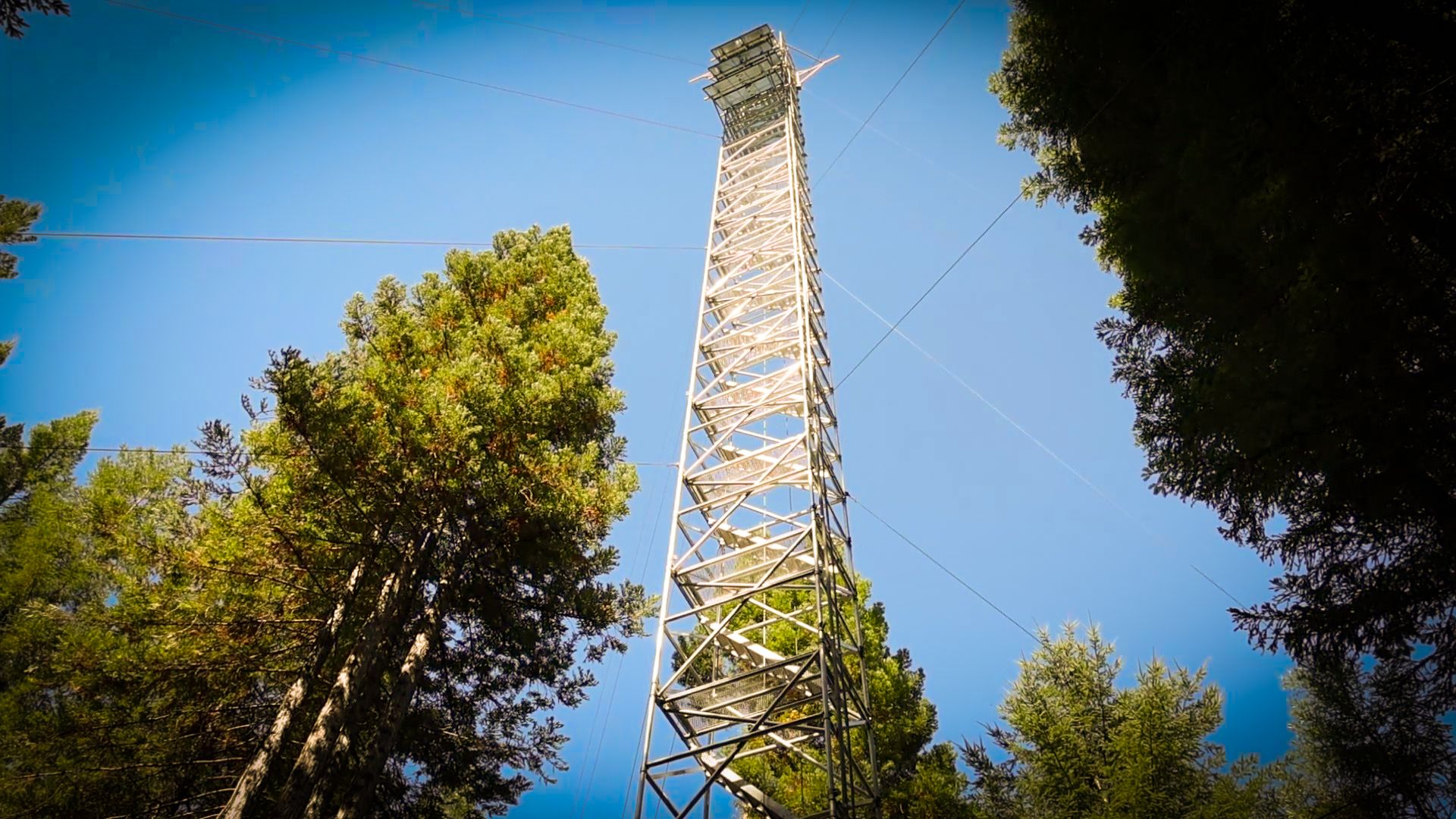
CNRA and Partners Install First Ever Redwood Forest Observatory
The California Natural Resources Agency (CNRA), in partnership with UC Davis, Lawrence Berkeley National Laboratory, the California Air Resources Board, and CAL FIRE, installed the first ever redwood forest observatory consisting of two research towers that will provide critical forest health information on California’s coast redwood forests. The recently installed flux towers are located in Jackson Demonstration State Forest, where they are measuring the inflow and outflow of carbon dioxide, water vapor, and energy between the redwoods and the surrounding environment. Instruments on these towers provide real time understanding of how redwoods respond to changing environmental conditions, wildfire, and management to help land managers protect this iconic forest ecosystem undergoing rapid change. Within the next year, aggregated measurements produced by these towers will be processed for public use.
What is a Flux Tower?
A flux tower is a tall structure that extends above the forest canopy, equipped with sensors at various heights to measure the exchange of gases and energy between the forest and the atmosphere using the eddy covariance technique.
These towers will provide:
- Direct, continuous measurements of redwood forests’ carbon sequestration and their response to climate, management, or natural disturbance, such as wildfire.
- Data on how the redwood forests respond to weather dynamics, such as fog, cloudiness, and summer drought, providing critical information on forest health.
- An important link between satellite data and computer models to enable evaluation of the health and resilience across California’s coast redwood forests.
- Data with the AmeriFlux research network, along with hundreds of research sites across the Americas. These networks help assess the responses and feedback of American terrestrial ecosystems to environmental changes, including those caused by climate, land use, and extreme events.
